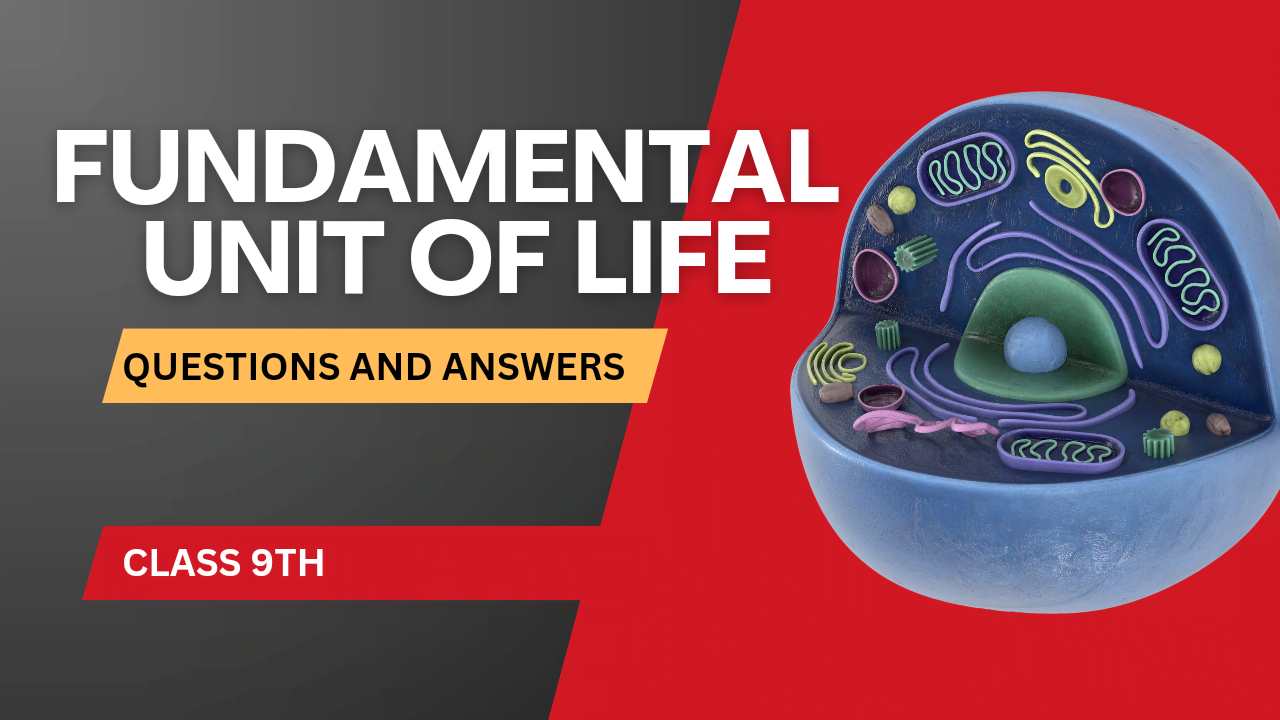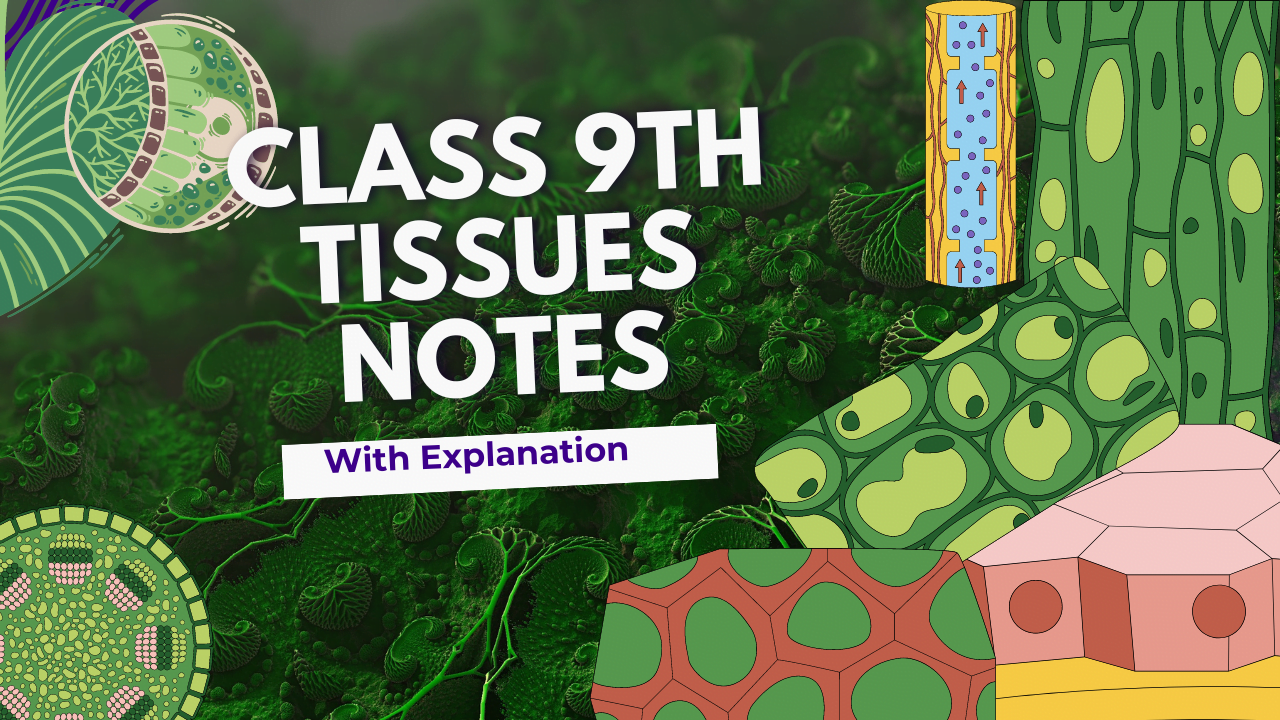Here is the detailed class 9 science chapter sound question answer with notes.
Sound
Sound is a form of energy that is produced by vibrations and propagates as waves through a medium. It enables communication and plays a fundamental role in various natural and technological processes.
Nature of Sound
- Mechanical Wave: Sound requires a material medium (solid, liquid, or gas) to propagate. It cannot travel through a vacuum.
- Vibrations: Sound is produced when an object vibrates and disturbs nearby air particles.
- Example: The vibrations of vocal cords, guitar strings, or a tuning fork produce sound.
Production of Sound
Sound is produced when an object vibrates, creating compressions and rarefactions in the medium. These vibrations are transmitted through material, allowing sound to propagate.
Examples of Sound Production:
- Musical instruments: Vibrating strings (guitar, violin), air columns (flute), or membranes (drums).
- Speaking and singing: vibrations of the vocal cords in the larynx.
- Tuning fork experiment: Striking a tuning fork causes vibrations, producing sound waves.
Conditions for Sound Production:
- A vibrating object as a source.
- A medium for sound propagation.
- The sound frequency must be within the audible range (20 Hz – 20 kHz) for human hearing.
Propagation of Sound
Sound waves propagate through a medium by transferring energy from one particle to another in the form of longitudinal waves.
How Sound Travels:
- A vibrating object disturbs air particles.
- The disturbance moves as a series of compressions (high-pressure regions) and rarefactions (low-pressure regions).
- These variations travel outward, carrying sound energy.
Sound Waves Are Longitudinal Waves
- In a longitudinal wave, particles of the medium oscillate parallel to the direction of wave travel.
- Sound waves consist of alternating compressions and rarefactions.
Graphical Representation:
- Compressions: High-pressure regions where particles are close together.
- Rarefactions: Low-pressure regions where particles are spread apart.
- The wavelength (λ) is the distance between two successive compressions or rarefactions.
Difference Between Longitudinal and Transverse Waves
| Feature | Longitudinal Wave (Sound) | Transverse Wave (Light) |
|---|---|---|
| Particle Movement | Parallel to wave direction | Perpendicular to wave direction |
| Example | Sound waves in air | Water waves, light waves |
Characteristics of a Sound Wave
Each sound wave has the following properties:

Speed of Sound in Different Media
The speed of sound varies in different materials due to differences in density and elasticity.
| Medium | Speed of Sound (m/s) |
|---|---|
| Air (at 25°C) | 344 |
| Water | 1500 |
| Steel | 5000 |
Key Observations:
- Sound travels fastest in solids, followed by liquids, and is slowest in gases.
- Increased temperature increases the speed of sound in gases.
Reflection of Sound
Like light, sound waves reflect when they encounter a solid surface, following the laws of reflection.
Laws of Reflection of Sound:
- The angle of incidence = angle of reflection.
- The incident wave, reflected wave, and normal all lie in the same plane.
Applications of Sound Reflection:
- Used in megaphones, stethoscopes, and auditorium acoustics.
- Helps in the formation of echoes and reverberation.
Echo
An echo occurs when a reflected sound wave is heard separately after a delay.
Conditions for Echo Formation:
- The reflecting surface must be at least 17.2 meters away.
- The human ear can distinguish sounds only if they are separated by at least 0.1 seconds.
Formula for Echo:

Example: Shouting near a mountain and hearing the reflected sound.
Reverberation
When multiple reflections cause sound to persist even after the source stops, it is called reverberation.
Effects of Reverberation:
- In concert halls, excessive reverberation makes speech unclear.
- Reduced by using sound-absorbing materials like carpets and foam.
Uses of Multiple Reflection of Sound
- Megaphones and Loudspeakers: Direct sound waves in a specific direction.
- Stethoscope: Amplifies heartbeat sounds via multiple reflections.
- Soundproofing: Uses soft materials to reduce reflection and control noise pollution.
Range of Hearing
The human ear detects sound within a specific frequency range.
| Type of Sound | Frequency Range |
|---|---|
| Infrasound | Less than 20 Hz |
| Audible sound | 20 Hz – 20,000 Hz |
| Ultrasound | Greater than 20,000 Hz |
Animals & Hearing:
- Dogs and bats hear ultrasonic waves.
- Elephants and whales communicate using infrasound.
Applications of Ultrasound
- Medical Imaging (Ultrasonography): Used to scan internal organs.
- SONAR (Sound Navigation and Ranging): Used by ships to detect underwater objects.
- Cleaning Machinery: Removes dirt from delicate instruments.
- Echolocation in Bats: Bats use ultrasound to navigate in darkness
NCERT Questions and Answers
1. How does the sound produced by a vibrating object in a medium reach your ear?
Answer:
When an object vibrates, it causes the particles of the surrounding medium (air, water, or solid) to vibrate as well. These vibrations travel as longitudinal sound waves in the form of compressions and rarefactions. When these waves reach our eardrum, they make it vibrate, and these vibrations are converted into electrical signals by the auditory nerve, which our brain interprets as sound.
2. Explain how sound is produced by your school bell.
Answer:
When the school bell is struck with a hammer, it begins to vibrate. These vibrations create compressions and rarefactions in the surrounding air, propagating sound waves. These waves travel through the air and reach our ears, allowing us to hear the bell’s sound.
3. Why are sound waves called mechanical waves?
Answer:
Sound waves require a medium (solid, liquid, or gas) to propagate because they rely on the movement of particles to transfer energy. Since they need a material medium to travel, they are classified as mechanical waves. Unlike electromagnetic waves, they cannot travel in a vacuum.
4. Suppose you and your friend are on the Moon. Will you be able to hear any sound produced by your friend?
Answer:
No, you will not be able to hear your friend because the Moon has no atmosphere (no air or medium for sound to travel). Since sound waves need a medium, they cannot propagate in a vacuum, making it impossible to hear any sound on the Moon.
5. Which wave property determines (a) loudness, (b) pitch?
Answer:
(a) Loudness is determined by the amplitude of the sound wave. A larger amplitude results in a louder sound.
(b) Pitch is determined by the frequency of the sound wave. Higher frequency produces a higher pitch.
6. Guess which sound has a higher pitch: guitar or car horn?
Answer:
A guitar produces a higher pitch compared to a car horn because it generates higher frequency sound waves.
7. What are wavelength, frequency, time period, and amplitude of a sound wave?
Answer:
- Wavelength (λ): The distance between two successive compressions or rarefactions.
- Frequency (f): The number of vibrations per second, measured in Hertz (Hz).
- Time period (T): The time taken for one complete vibration. It is the inverse of frequency. T=1/f
- Amplitude (A): The maximum displacement of particles from their mean position, determining the loudness of the sound.
8. How are the wavelength and frequency of a sound wave related to its speed?
Answer:
The speed of sound (v) is given by the formula: v= f×λ
where
v = Speed of sound,
f = Frequency,
λ = Wavelength.
This shows that wavelength and frequency are inversely proportional for a given speed of sound.
9. Calculate the wavelength of a sound wave whose frequency is 220 Hz and speed is 440 m/s in a given medium.
Answer:
Using the formula:λ=v/f=2 m
Thus, the wavelength of the sound wave is 2 meters.
10. A person is listening to a tone of 500 Hz sitting at a distance of 450 m from the source of the sound. What is the time interval between successive compressions from the source?
Answer:
The time period of the wave is:T=1/f=0.002 seconds
So, the time interval between successive compressions is 0.002 seconds.
11. Distinguish between loudness and intensity of sound.
| Property | Loudness | Intensity |
|---|---|---|
| Definition | Perceived strength of sound | Amount of sound energy per unit area |
| Depends on | Amplitude of wave | Power per unit area |
| Measured in | Decibels (dB) | Watts per square meter (W/m²) |
12. In which of the three media, air, water, or iron, does sound travel the fastest at a particular temperature?
Answer:
Sound travels fastest in iron, followed by water, and slowest in air because solids have closely packed particles, allowing faster transmission of sound waves.
13. An echo is heard in 3 s. What is the distance of the reflecting surface from the source, given that the speed of sound is 342 m/s?
Answer:
Using the echo formula:d=v×t/2=342×32 = 513 m
Thus, the reflecting surface is 513 meters away.
14. Why are the ceilings of concert halls curved?
Answer:
Curved ceilings help in the uniform distribution of sound by reflecting it towards the audience, improving acoustics and reducing reverberation.
15. What is the audible range of the average human ear?
Answer:
The human ear can hear sounds in the frequency range of 20 Hz to 20,000 Hz.
16. What is the range of frequencies associated with (a) Infrasound? (b) Ultrasound?
Answer:
(a) Infrasound: Below 20 Hz.
(b) Ultrasound: Above 20,000 Hz.
17. What is reverberation? How can it be reduced?
Answer:
Reverberation is the prolonged persistence of sound due to multiple reflections. It can be reduced by using sound-absorbing materials like carpets, curtains, and acoustic panels.
18. How is ultrasound used for cleaning?
Answer:
Ultrasound waves create high-frequency vibrations that dislodge dirt and debris from delicate objects like jewelry, watches, and medical instruments.
19. Explain how defects in a metal block can be detected using ultrasound.
Answer:
Ultrasound waves are passed through a metal block. If there is a defect or crack, part of the sound wave gets reflected back, creating an irregular pattern in the received signal. This method is widely used in non-destructive testing (NDT).



